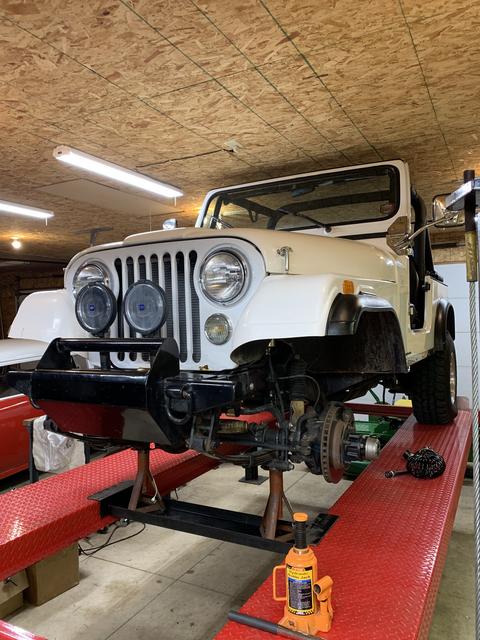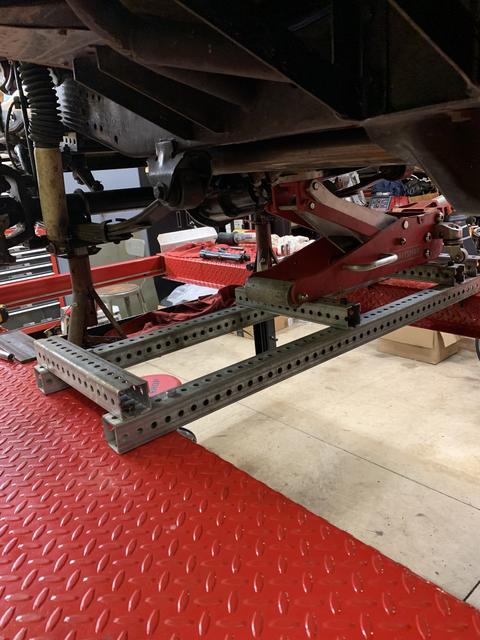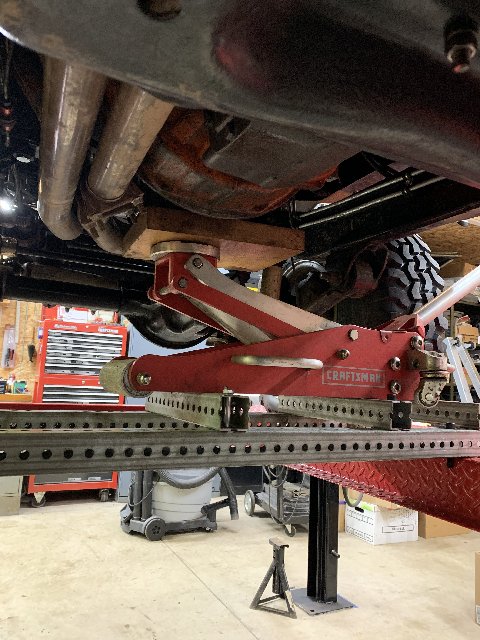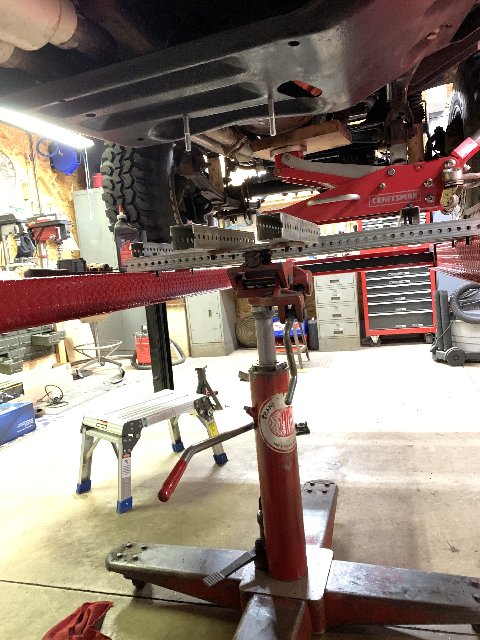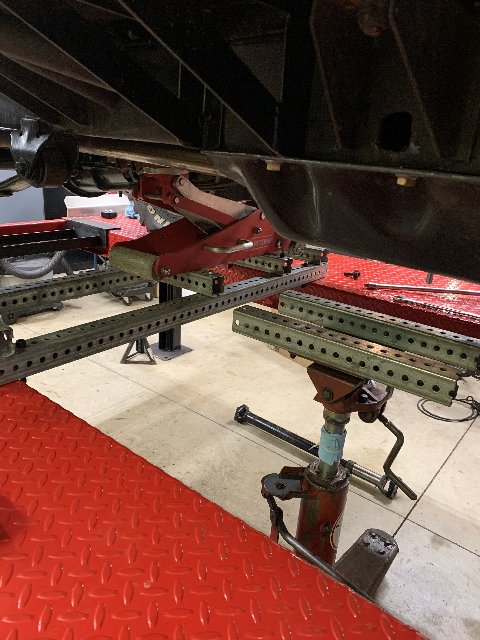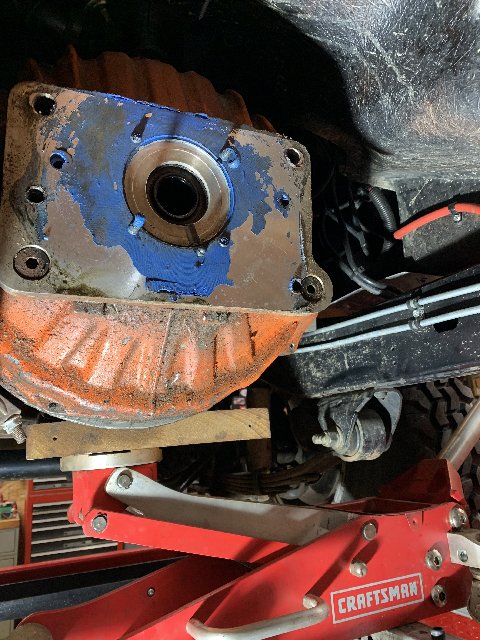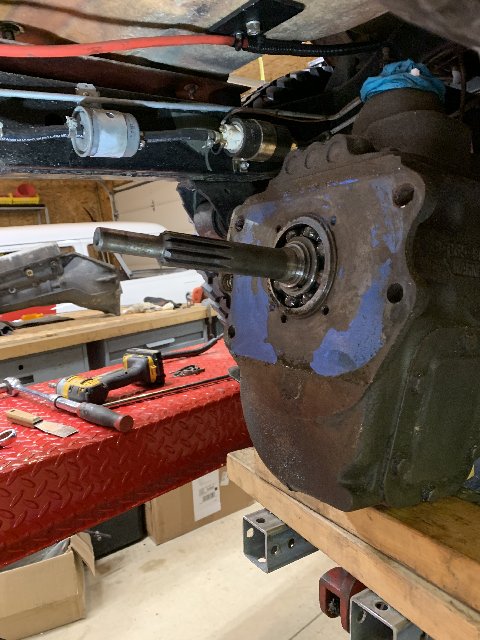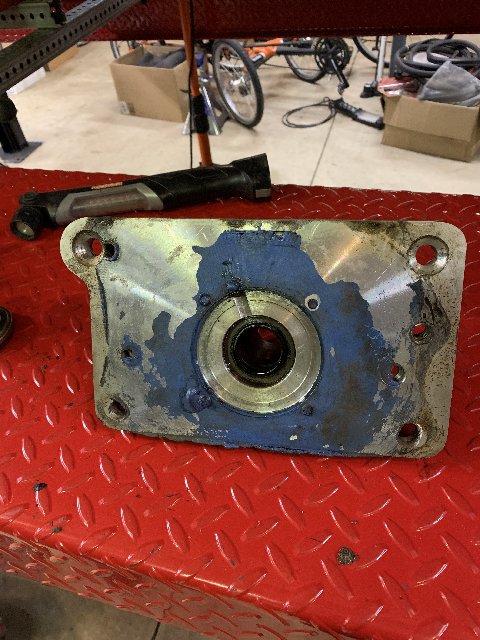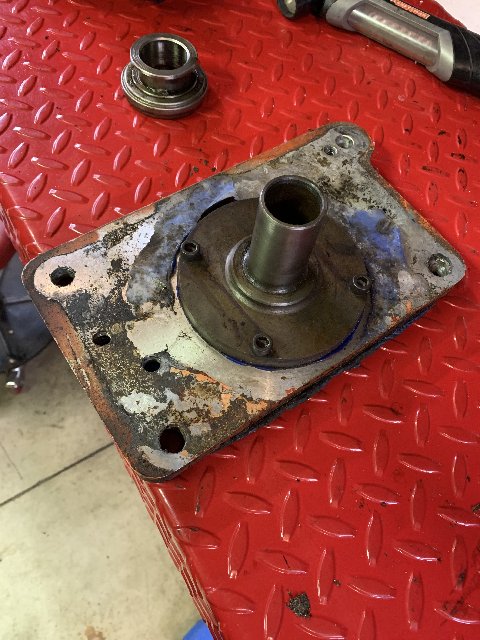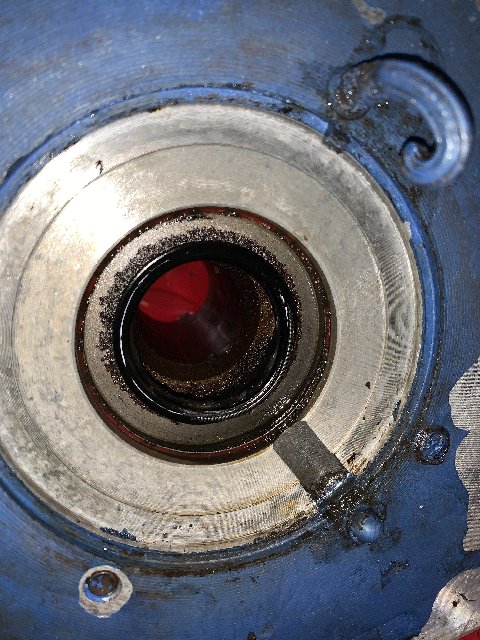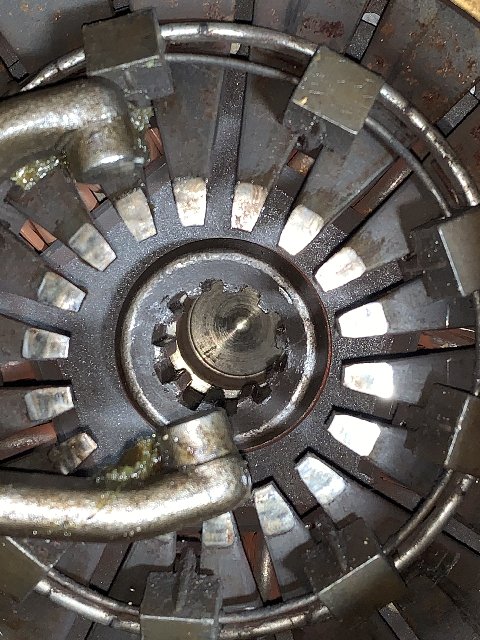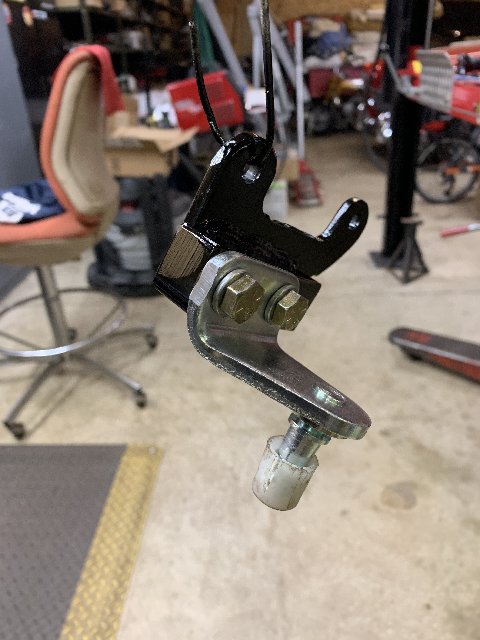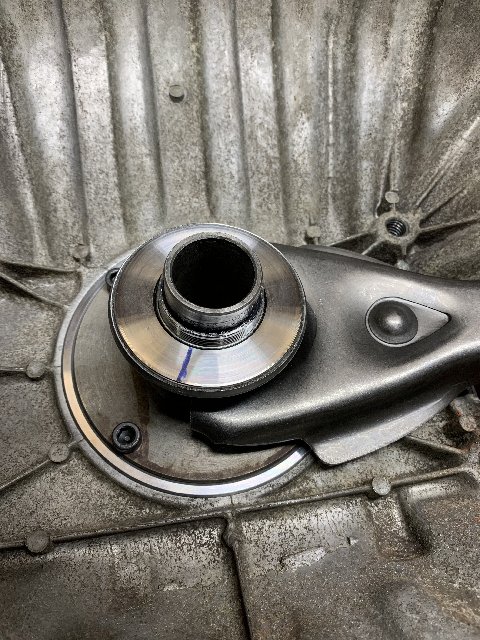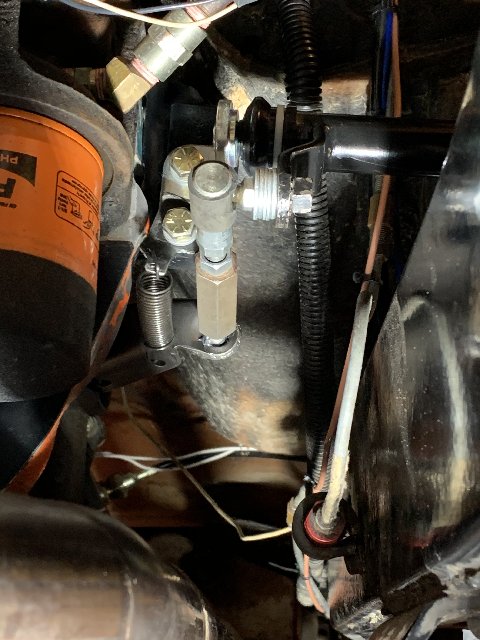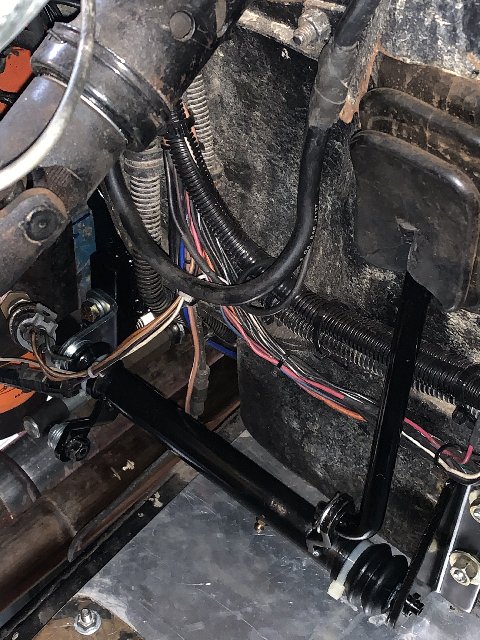I'm starting this thread to help me with my plans to replace my throw out bearing in my 78 CJ7. It has a TPI 350 Chevy and a T18a 4-speed transmission. I currently have very noticeable noise from the bearing when engaged, and realize it's only a matter of time until it fails... A little background is in order, I believe.
I bought this Jeep a few years ago, as a project in process. My build thread can be found here, for anyone who might be interested. When I got the Jeep, the driveline was already in place. I mostly worked on wiring and miscellaneous mechanical details. The clutch works OK, but the linkage is a bit suspect. There was a spring attached to the clutch fork, but it was installed in the wrong direction, actually pulling the bearing into contact with the pressure plate. This likely contributed to the bearing getting worn out. I reversed the spring, to try to get the bearing away from the pressure plate when not being used, but I believe the damage had already been done, as it sound 'dry' when engaging. The clutch fork boot is all ripped up too. The linkage is a bit sloppy, so I might decide to upgrade it with rod Heim joints, etc. I'm also considering changing over to a hydraulic actuation system, and would be interested in hearing your thoughts on that idea.
My first set of questions to the Forum experts are concerning the best approach to access the clutch. I'm thinking of blocking up the rear of the engine with the jack tray on my 4-post hoist, then pulling the skid plate (which is the rear cross member), followed by pulling the transfer case (after the drive shafts, of course). Then I would pull the transmission, after removing the shifter assembly from the top. Lastly, I would remove the clutch linkage and bell housing, exposing all my issues. Does this sound like a good approach? I'm open to any and all suggestions to help make this job go as smoothly as possible... Looking forward to your replies!
Regards,
John
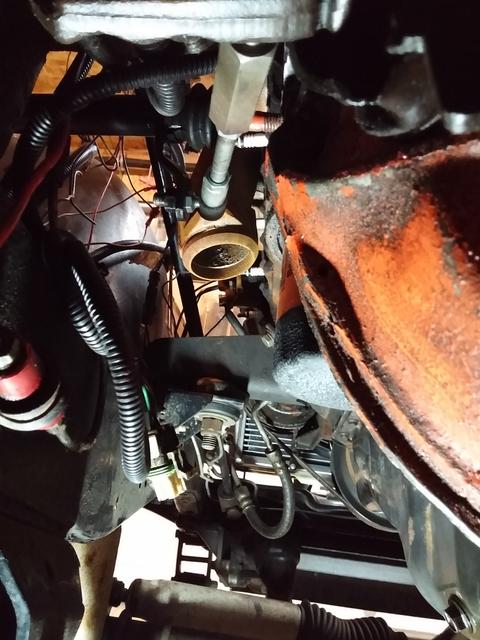
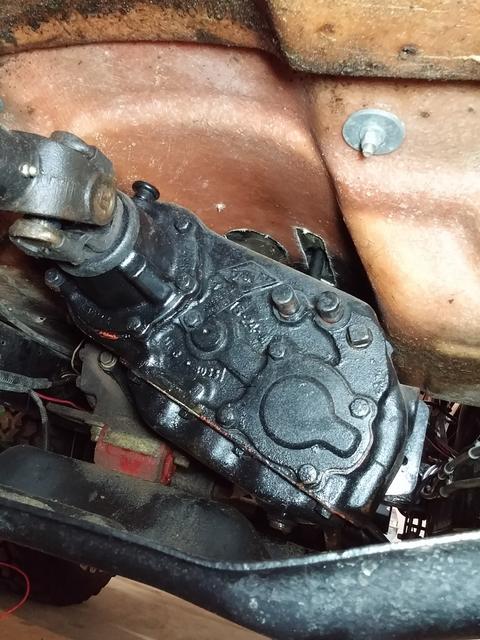
I bought this Jeep a few years ago, as a project in process. My build thread can be found here, for anyone who might be interested. When I got the Jeep, the driveline was already in place. I mostly worked on wiring and miscellaneous mechanical details. The clutch works OK, but the linkage is a bit suspect. There was a spring attached to the clutch fork, but it was installed in the wrong direction, actually pulling the bearing into contact with the pressure plate. This likely contributed to the bearing getting worn out. I reversed the spring, to try to get the bearing away from the pressure plate when not being used, but I believe the damage had already been done, as it sound 'dry' when engaging. The clutch fork boot is all ripped up too. The linkage is a bit sloppy, so I might decide to upgrade it with rod Heim joints, etc. I'm also considering changing over to a hydraulic actuation system, and would be interested in hearing your thoughts on that idea.
My first set of questions to the Forum experts are concerning the best approach to access the clutch. I'm thinking of blocking up the rear of the engine with the jack tray on my 4-post hoist, then pulling the skid plate (which is the rear cross member), followed by pulling the transfer case (after the drive shafts, of course). Then I would pull the transmission, after removing the shifter assembly from the top. Lastly, I would remove the clutch linkage and bell housing, exposing all my issues. Does this sound like a good approach? I'm open to any and all suggestions to help make this job go as smoothly as possible... Looking forward to your replies!
Regards,
John





